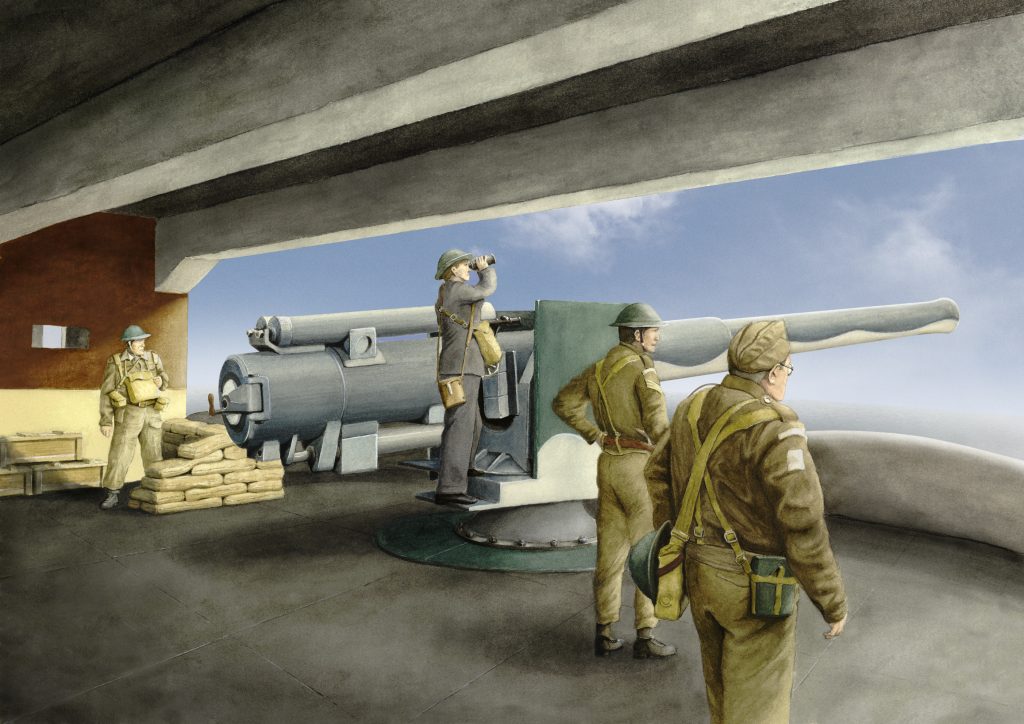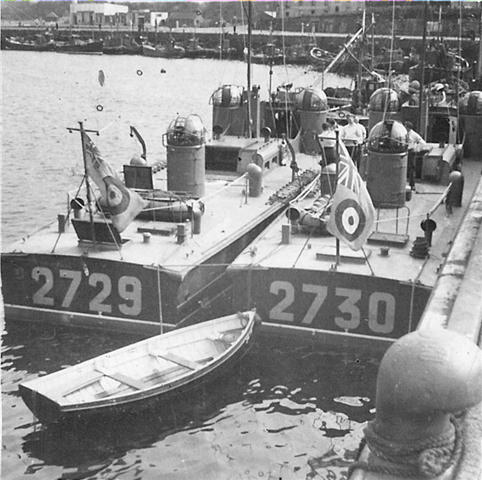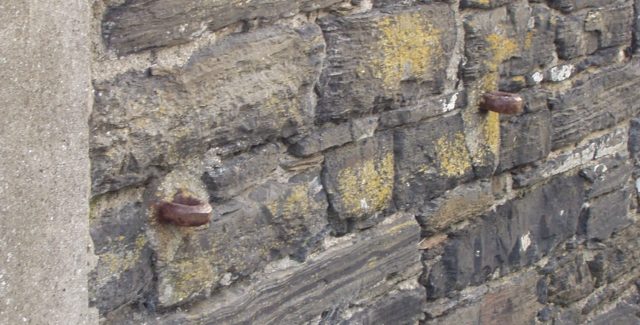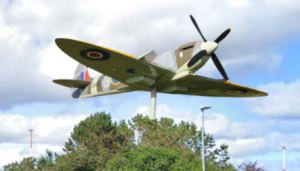Site 5. Wick Harbour
During the summer of 1940 Wick Harbour was considered a port of strategic importance and measures were hastily put in place to defend the harbour as the threat of invasion loomed on the horizon. The main defensive measure was the installation of the ‘Emergency’ Gun Battery at Broadhaven which overlooked Wick Bay. The ‘Emergency’ refers to the fact that it was constructed under the Emergency Powers (Defence) Act 1939, which enabled the government to bypass many normal procedures and requirements in land acquisition and building.
Men of the 307 Emergency Coast Battery, Royal Artillery, began to arrive on site at the end of May 1940. Construction started at the beginning of June and the guns were ready for action by the 19th of the same month. Initially the battery was manned by 68 soldiers including officers and NCOs, but by the 9th August 1940 this had been increased to 111 men. The battery consisted of two 6 inch (15cm) Mk XI ex-naval guns housed in two massive concrete emplacements, with ‘No. 1 Gun’ constructed by VSM (Vickers, Sons & Maxim) in 1910, and ‘No. 2 Gun’ in 1912. The battery was supported by two Coastal Artillery Search Lights (CASLs), as well as an Observation Post, main and forward magazines, barrack blocks, engine houses and other support buildings. Throughout the war merchant vessels were instructed not to approach within three miles of the coast of Wick between sunset and sunrise unless advanced notice had been given, otherwise they would be engaged by the Coastal Artillery Battery.

As well as the Coastal Artillery Battery at Broadhaven, Wick harbour was surrounded by five FW3/26 machine gun pillboxes,one of which still survives above the North Baths. In the event that an invasion did take place, an Immobilisation Scheme was prepared for the port of Wick. It was planned that explosive charges placed in specially prepared chambers would cut the three piers at Wick harbour. When the charges were detonated they would create a trench some 5 feet deep by 10 feet wide (1.5m x 3m) across each of the piers, rendering them (supposedly) unusable by the enemy.


However, it was noted that this obstacle could quickly be filled in or bridged, and It was also commented that the large amount of explosives required to blow the piers would cause considerable damage to the buildings in the vicinity of the harbour and wreck the lower part of the town. It was presumed that the harbour would be recaptured by allied forces within seven days of any enemy invasion, so a balance had to be struck, destroy enough to deny its use to the enemy but not so much that you denied it to yourself when re-captured.
In March 1943 the commander of the Caithness Garrison reviewed the scheme and as a result asked the Scottish Command for the Immobilisation Scheme for Wick to be abandoned. This was agreed. To further hinder the enemy’s exit from theharbour area heavy chains were attached across the streets leading away from the harbour. The anchor eyelets for these barriers are still to be seen in-situ in the walls of the properties at the lower end of Martha Terrace, Burn Street, Telford Street,Saltoun Street and Rose Street. A flame projector was also installed between the river piers, as well as the provision of the two old drifters, ‘Lottie’ and ‘Isabella Ferguson’ which would have been sunk to block the entrance to the harbour.
Two RAF High Speed Launches ‘2729’ and ‘2730’ from No 4 Air/Sea Rescue Marine Craft Unit were based at Wick Harbour between March 28th 1942 and February 1st 1946. These launches could quickly respond to rescue any aircrew from aircraft that ditched in the sea.




